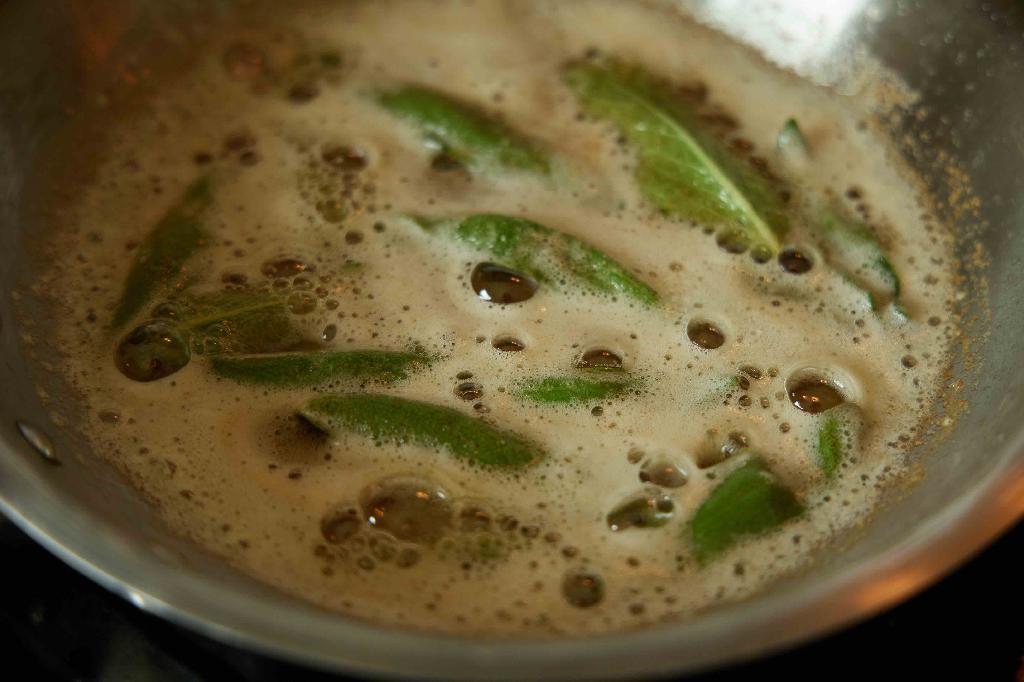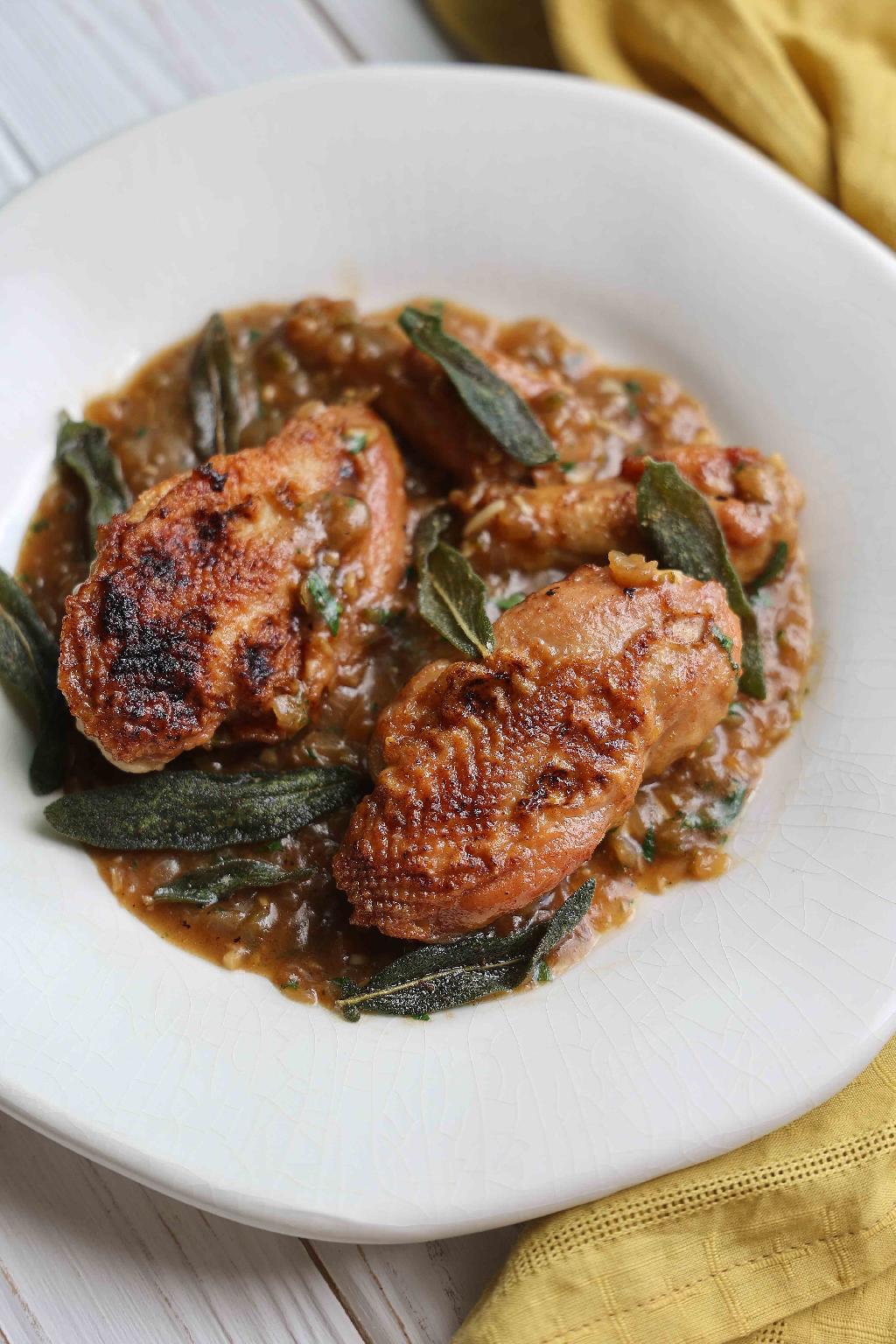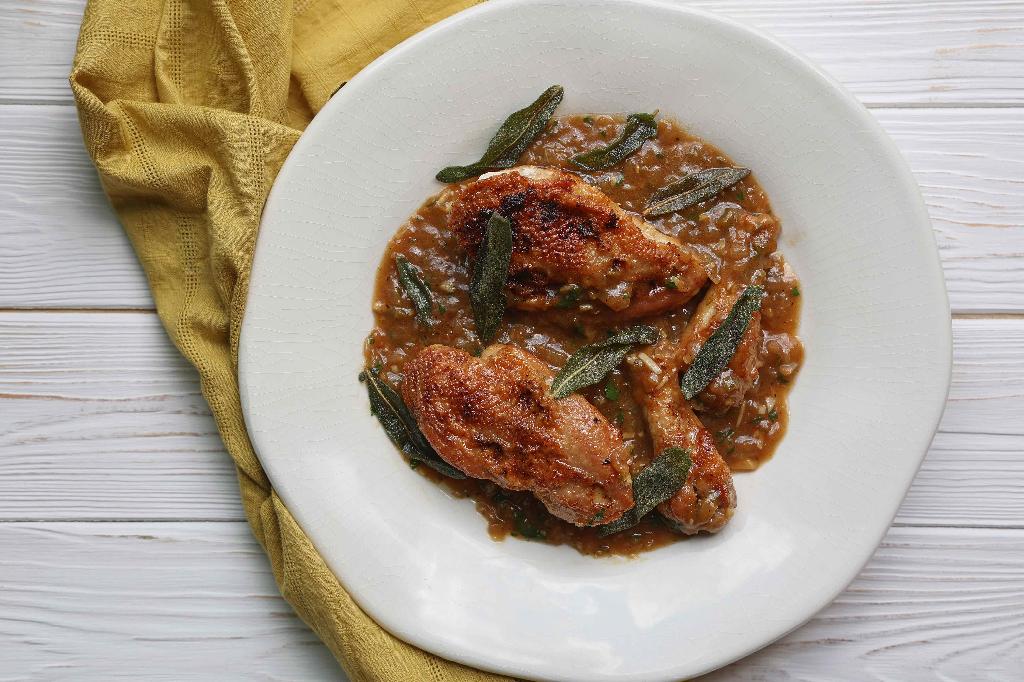Smothered Pheasant with Crispy Sage
Go back to all recipesSmothering is simple: Meat and vegetables are browned, liquid is added to make a gravy, and the whole thing is covered and gently cooked until tender over the stovetop. This dish also works well in the slow cooker, especially if you plan on cooking the whole bird, because you’re less likely to burn it. Double the gravy recipe in this case and add more stock as needed. In step three, transfer the pheasant and gravy into a slow cooker and set on low until tender.
Ingredients
Instructions
Step #1 Season pheasant with seasoned salt to taste. Pour ¼ cup of flour into a shallow bowl or dish. In a skillet over medium-high heat, heat ¼ cup of vegetable oil, and when hot, dredge seasoned pheasant pieces in flour and fry until golden on both sides. If pheasant has skin on it, brown the skin side first. Transfer fried pheasant to a plate and set aside.
Step #2 Lower heat to medium. Pour out excess oil in the skillet, leaving 2 tbs. remaining. Then add finely diced onion and celery, and sauté until translucent, about 5 minutes. Then add minced garlic, ¼ tsp. of seasoned salt and 1 tbs. of flour, and stir for about 2 minutes. Do not allow the garlic to burn – lower heat if needed.
Step #3 Next, gradually stir in stock, scraping up browned bits stuck to the bottom of the pan. Allow sauce to simmer for about 5-7 minutes to thicken, increasing heat if needed, stirring occasionally. Sauce is thick enough when you can run a spoon across it and make a path that lasts momentarily. Then, lay pheasant skin-side up into the sauce. Cover and simmer on low for 15 minutes. Stir the sauce occasionally to prevent the bottom from burning.

Step #4 Meanwhile, melt butter in a small skillet over medium heat. When you see the color of the butter start to turn hazelnut color – watch carefully – quickly add the sage leaves one by one. Take skillet off heat (off the burner it was on) to prevent the butter from burning; it will taste bitter if burnt. Flip the leaves to fry the other side with residual heat, and then drain sage leaves on a paper towel. They should be crispy.

Step #5 Transfer pheasant to a serving dish. To the sauce, stir in the browned butter, chopped parsley, Tabasco sauce, and freshly cracked pepper and salt to taste. Pour sauce over pheasant and garnish with crispy sage leaves. Serve immediately with cooked white rice.
Recipe Card
Smothered Pheasant with Crispy Sage
Ingredients
Instructions
About the Author

Jenny and Rick Wheatley
Visit authors websiteJenny and Rick Wheatley both grew up in Southern California and connected over a shared love of the outdoors. They started their wild game cooking blog Food for Hunters in 2011, where they share recipes, photos and thoughts on wild food. Today, Jenny and Rick continue to hunt, fish, forage and cook in the Cornhusker State of Nebraska. Their recipes have appeared in numerous publications, including Petersens Hunting, Game and Fish, Nebraskaland and North American Whitetail magazines.
The Nebraska Center for the Book awarded their book Hunting for Food: Guide to Harvesting, Field Dressing and Cooking Wild Game the Wildlife Honor Award in 2016.
Photo Credit

Jenny Wheatley
Visit artist websiteWebsite: www.foodforhunters.com
Instagram: @foodforhunters
Facebook: www.facebook.com/foodforhunters



















